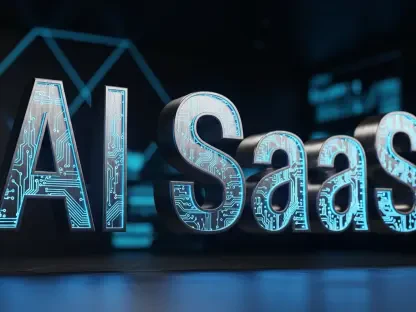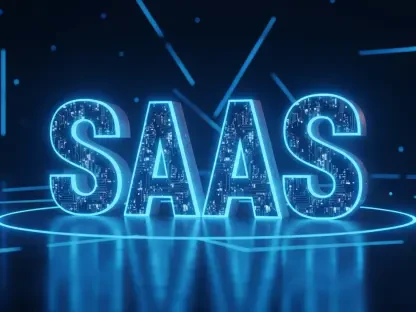Understanding the SaaS Landscape
The Software-as-a-Service (SaaS) industry stands as a powerhouse in today’s business ecosystem, with projections estimating its market value to surpass $1 trillion by 2032. This remarkable growth trajectory underscores the transformative role SaaS plays in modern enterprises, offering cloud-based solutions that eliminate the need for traditional on-premise software. With an estimated 40,000 to 100,000 providers worldwide, the sector is bustling with innovation, driven by major players like Salesforce and HubSpot, as well as emerging niche contenders.
The allure of SaaS for startups and small-to-medium businesses (SMBs) lies in its cost-effectiveness and flexibility. By minimizing infrastructure expenses, enabling seamless scalability, and providing predictable revenue through subscription models, SaaS lowers the barriers to entry for new ventures. This model allows businesses to focus on growth rather than maintenance, making it a preferred choice in a competitive digital landscape.
Key characteristics define the SaaS framework, including cloud-based delivery that ensures accessibility from any device, a subscription-based payment structure for consistent cash flow, and multi-tenant architecture where multiple users share the same application instance while maintaining data privacy. These elements combine to create a robust, user-friendly environment that continues to attract entrepreneurs and established firms alike.
Market Dynamics and Growth Potential
Key Trends Shaping the SaaS Industry
Several transformative trends are propelling the SaaS sector forward, with vertical and micro SaaS solutions gaining traction by addressing specific industry needs in areas like healthcare and fintech. These niche offerings often yield higher revenue potential due to their targeted approach, catering to specialized demands that broader platforms may overlook.
Another significant driver is the integration of artificial intelligence (AI) and automation, which enhances user experiences through personalization and operational efficiency. Additionally, the rise of low-code platforms empowers non-technical users to develop applications, accelerating innovation and reducing dependency on specialized developers.
Consumer preferences are also shifting toward accessible, subscription-based software that can be used globally without installation hassles. This demand for convenience, coupled with the ability to tap into underserved markets, creates fertile ground for SaaS providers to explore opportunities in education, logistics, and beyond.
Market Data and Future Outlook
Current data reveals a median growth rate of 25% among SaaS companies, signaling robust expansion and investor confidence. Performance metrics such as customer acquisition cost (CAC) and customer lifetime value (CLV) remain critical, with successful firms aiming for a CLV at least three times higher than CAC to ensure sustainability.
Looking ahead, the SaaS market is poised for continued growth through 2032, fueled by emerging technologies like generative AI and the adoption of flexible pricing models such as usage-based billing. These innovations promise to align costs more closely with value delivered, enhancing customer satisfaction and retention.
The future also holds potential for SaaS to penetrate deeper into niche sectors, leveraging advancements in cloud computing and data analytics. Staying attuned to these developments will be essential for companies aiming to maintain a competitive edge in an increasingly crowded marketplace.
Challenges in Building a Successful SaaS App
Developing a successful SaaS application comes with a unique set of obstacles, including ensuring data security and compliance with regulations like GDPR in Europe and HIPAA in the United States. These requirements demand rigorous attention to protect sensitive user information and avoid costly penalties.
Integration complexity poses another hurdle, as SaaS platforms often rely on third-party services, with costs ranging from modest to substantial. Scalability issues can also emerge during sudden user growth, potentially leading to performance bottlenecks if infrastructure isn’t adequately planned. Addressing these through API-first design and horizontal scaling strategies can mitigate risks.
User adoption and churn, averaging around 5% for SaaS firms, further complicate growth efforts, alongside budget constraints that often plague early-stage startups. Solutions such as intuitive onboarding processes, responsive support, and outsourcing non-core tasks can help manage expenses while maintaining focus on delivering value to customers.
Navigating the Regulatory and Security Environment
Compliance with global regulations plays a pivotal role in SaaS development, particularly for applications targeting regulated industries. Adhering to standards like GDPR for data protection in European markets or HIPAA for healthcare in the U.S. requires meticulous planning and often influences architectural decisions, such as choosing between single-tenant and multi-tenant setups.
Security measures are equally critical, encompassing data encryption, multi-factor authentication, and regular audits to safeguard user trust. These practices not only protect against breaches but also demonstrate a commitment to privacy that can differentiate a SaaS offering in a competitive field.
The impact of regulatory demands extends to development timelines and costs, often necessitating the expertise of compliance specialists, especially in highly regulated sectors. Balancing these requirements with innovation remains a key challenge, requiring strategic foresight to ensure both legal adherence and market relevance.
Future Trends and Innovations in SaaS Development
The SaaS industry is on the cusp of significant evolution, with generative AI leading the charge by enabling personalized user experiences, predictive analytics, and automated workflows. These capabilities promise to reduce operational costs while opening new avenues for monetization through premium features.
Hybrid and multi-cloud strategies are also gaining momentum, offering flexibility in hosting and resilience against outages. Enhanced security protocols, such as continuous authentication, alongside value-based pricing models, are set to redefine how SaaS providers deliver and charge for services in response to rising cyber threats.
Adaptability to these trends will be crucial for long-term success, as technological advancements continue to reshape customer expectations. Keeping pace with innovations like low-code development and AI-driven insights ensures that SaaS offerings remain relevant and capable of addressing emerging market needs.
Step-by-Step Guide to Building Your SaaS App
Building a SaaS application requires a structured approach, beginning with idea validation through market research and competitor analysis to confirm demand. Defining core functionality follows, using frameworks like MoSCoW or RICE to prioritize essential features over supplementary ones, ensuring a focused initial offering.
Selecting a monetization model, such as subscription tiers or freemium options, aligns revenue goals with user expectations, while choosing a tech stack—whether AWS, Azure, or Google Cloud—sets the foundation for scalability. Crafting a product roadmap with clear milestones and assembling a skilled team, whether in-house or outsourced, are vital next steps to streamline development.
The process culminates in development, testing, and launch, with continuous iteration based on real-world feedback and analytics to refine the product. Post-launch, monitoring metrics like churn and engagement helps identify areas for improvement, ensuring the application evolves to meet user needs effectively.
Conclusion and Strategic Recommendations
Reflecting on the insights gathered, the journey of crafting a SaaS application demands strategic planning, robust architecture, and a keen eye on industry shifts. The challenges of compliance, security, and user retention stand as formidable barriers that many navigate with innovative solutions and partnerships.
Moving forward, founders are advised to collaborate with seasoned development teams to tackle technical complexities and market dynamics with greater ease. Embracing emerging technologies and prioritizing customer-centric design offer pathways to transform initial concepts into scalable, profitable ventures.
Ultimately, the focus shifts toward sustained innovation and adaptability, ensuring that SaaS products not only meet current demands but also anticipate future needs. This proactive stance paves the way for lasting impact in a rapidly evolving digital arena.









